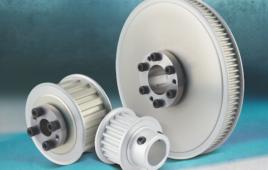 At the recent NAHAD Annual Meeting & Convention in Marco Island, Florida, manufacturers and distributors listened to and then interacted with David Nour, author of the book Co-Create: How Your Business Will Profit from Innovative and Strategic Collaboration.
At the recent NAHAD Annual Meeting & Convention in Marco Island, Florida, manufacturers and distributors listened to and then interacted with David Nour, author of the book Co-Create: How Your Business Will Profit from Innovative and Strategic Collaboration.
One of the most interesting parts of his talk was a section on barriers to innovation. After all, innovation is at the heart of any successful manufacturer, whether you’re making a small component that’s part of a larger machine or designing that larger machine itself. And beyond that, you also have to be willing to innovate in everything from the manufacturing process to how you deal with the people working in your organization.
According to Nour, some of the main things standing in the way of innovation are risk avoidance, leadership, staffing and internal systems. But, according to a live survey he took of the attendees, risk avoidance turns out to be the biggest one in the manufacturing world. That makes sense—especially in more mature aspects of engineering design, it’s easy to fall back on the concept of “things are going well, why should I do anything differently?”
So, how do you embrace innovation at your company and take risks? One good place to start is with trust.
Top performing companies are five times more likely to embrace a culture that embraces trust, said Nour. In this context, think of trust as safety. Create a space for people in your company to take prudent risks.
“Ever since we were kids, it’s been driven into us that failure is bad,” he said. “But we learn more from the things that don’t go well. And when we scrape our knees and have to get up and then go at it again, that’s progress. Think of it as ‘we never failed, we always learn.’”
There is also a different side of trust, and that ties into leadership. Do your leaders trust people who look or think differently than them? Do you?
Nour explained that 42% of top performing organizations value diversity. That doesn’t simply mean ethnic, nor gender, but also diversity of thought. That turns out to be most entrepreneurs’ blind spot. They tend to attract and recruit—as well as promote—everybody else just like themselves. Yet, if you don’t have that proverbial devil’s advocate in the room who says, “Okay, I get it, I’m just asking why are we doing this again?” then Nour said that you’re going to keep finding yourself playing Monday morning quarterback, and asking what went wrong, instead of truly innovating.
Filed Under: Uncategorized




